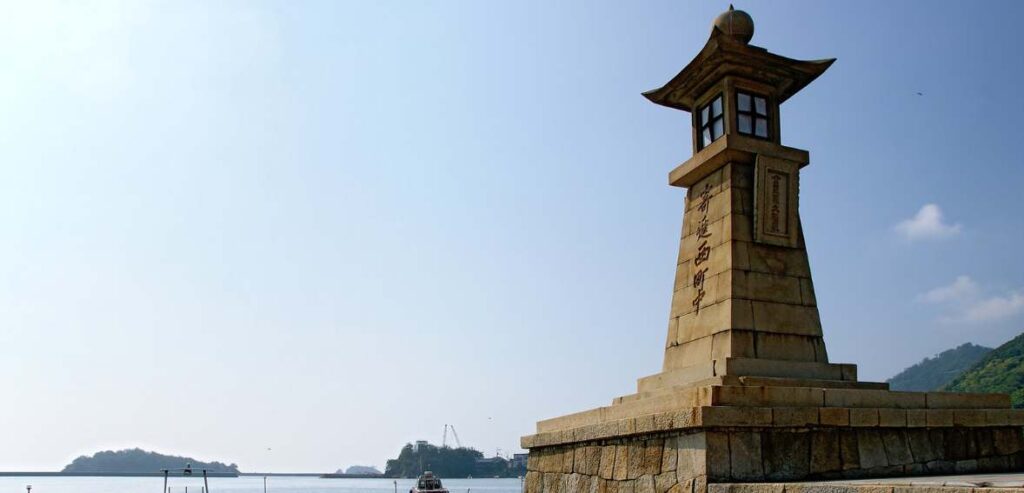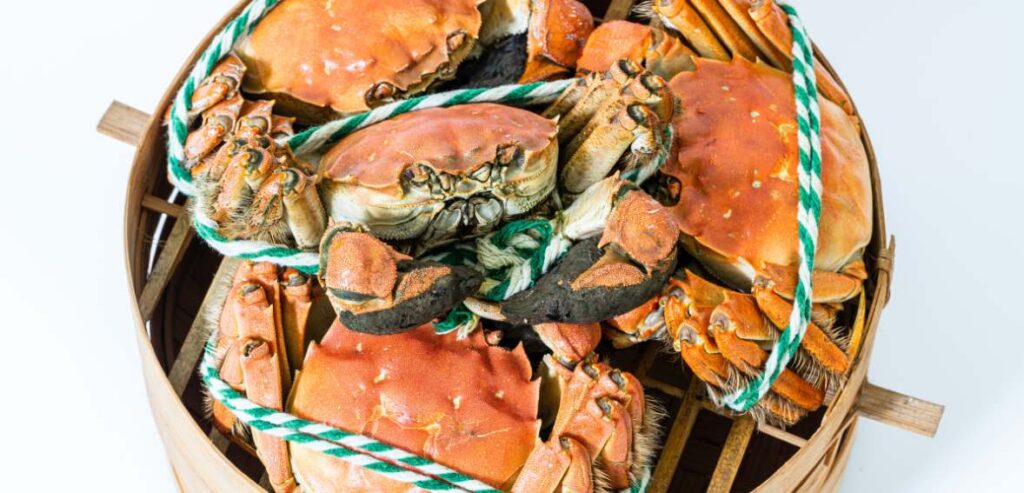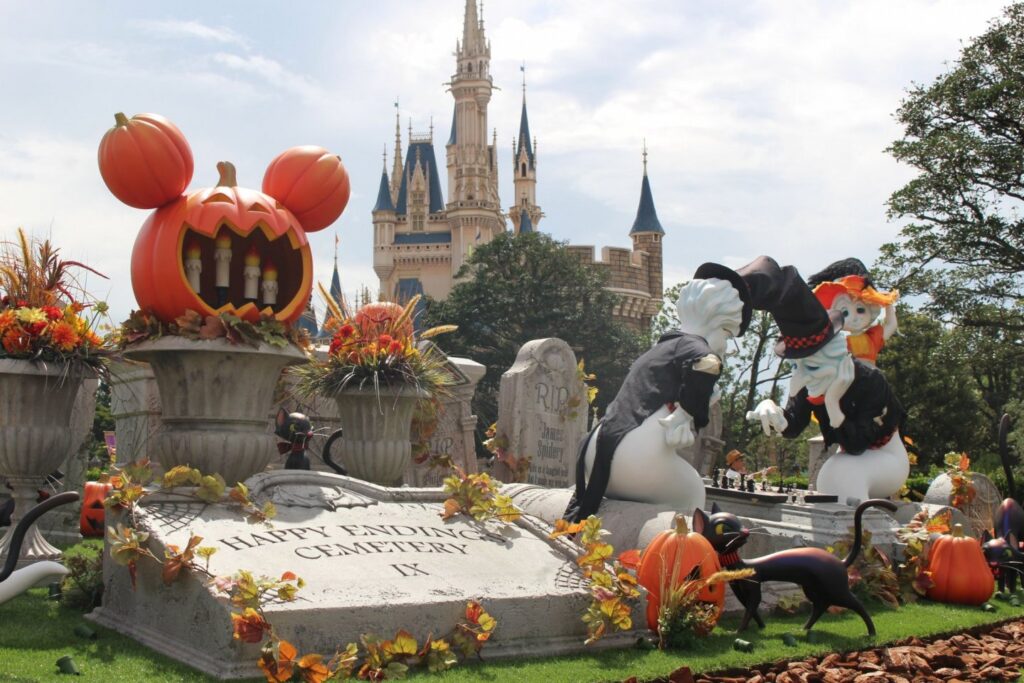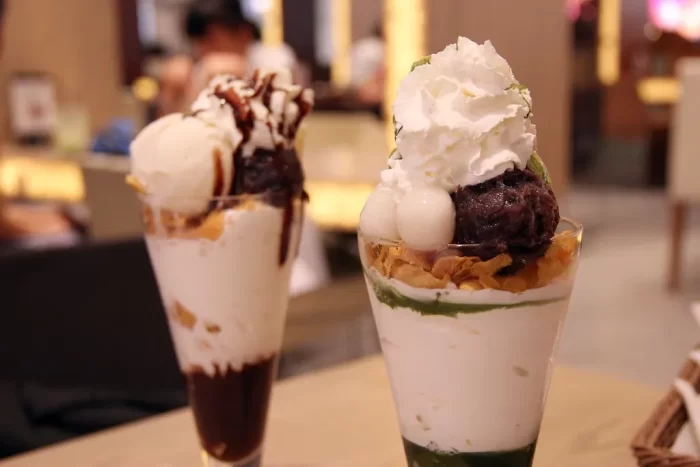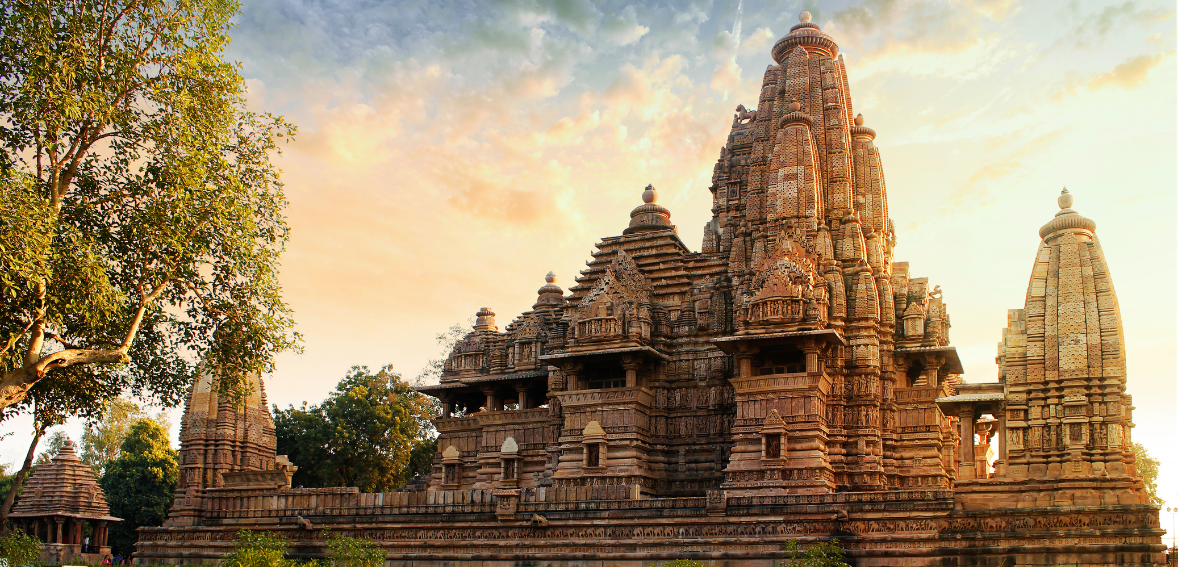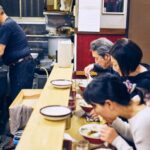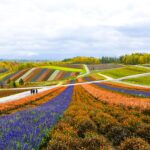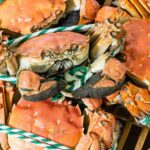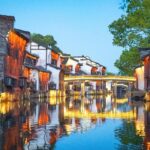Now Reading: Travel Guide: Tokyo to Hokkaido
-
01
Travel Guide: Tokyo to Hokkaido
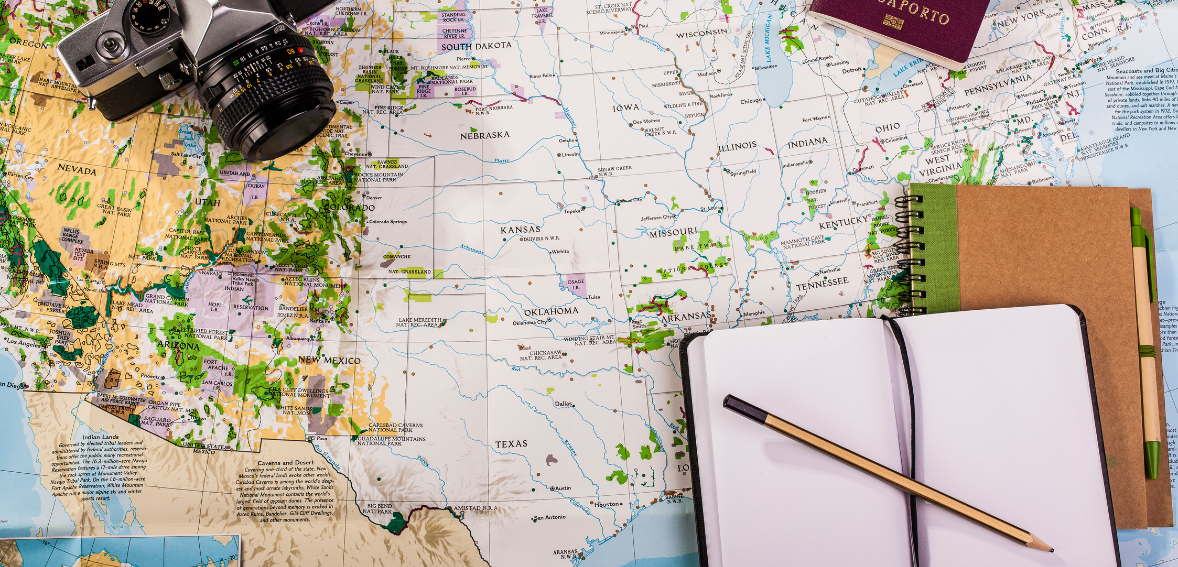
Travel Guide: Tokyo to Hokkaido
Tokyo, Japan’s vibrant capital, is a dynamic metropolis where the ultramodern intersects with the traditional. Skyscrapers in Shibuya and the historic temples of Asakusa coexist harmoniously, offering visitors a multifaceted experience. Tokyo’s bustling districts, like Ginza and Akihabara, provide a diverse range of shopping, dining, and entertainment options, while its cultural landmarks offer a glimpse into Japan’s rich history. As Japan’s political and economic epicenter, Tokyo is often the starting point for travelers exploring the country.
In stark contrast, Hokkaido, the northernmost of Japan’s main islands, offers a refreshing departure from Tokyo’s urban energy. Hokkaido is celebrated for its breathtaking natural landscapes, from the snow-capped peaks of the Japanese Alps to the expansive flower fields of Furano. Known for its exceptional ski resorts, including Niseko and Rusutsu, and its rejuvenating hot springs, Hokkaido is a haven for outdoor enthusiasts and those seeking relaxation. The island’s capital, Sapporo, stands out with its vibrant beer culture, historic architecture, and the spectacular Sapporo Snow Festival, which draws visitors from around the globe with its stunning ice sculptures and winter festivities.
If you’re planning to trade Tokyo’s neon lights for Hokkaido’s serene landscapes, understanding the best ways to travel between these two destinations is crucial. Whether you prefer the speed and efficiency of air travel or the leisurely pace of a ferry ride, this guide provides detailed information on transportation options, including schedules, ticket prices, and travel tips. We’ll help you navigate your journey from Tokyo to Hokkaido, ensuring a smooth transition from one fascinating part of Japan to another.
1. Air travel
Air travel is one of the fastest and most convenient ways to travel between Tokyo and Hokkaido, especially for travelers who value efficiency and comfort. With numerous flights departing daily, several airlines serve this popular route, offering a range of options for different types of travelers.
In this section, we’ll explore the different flight options, ticket prices, time considerations, and the overall experience of flying from Tokyo to Hokkaido, helping travelers make informed decisions.
Major Airports and Flight Routes
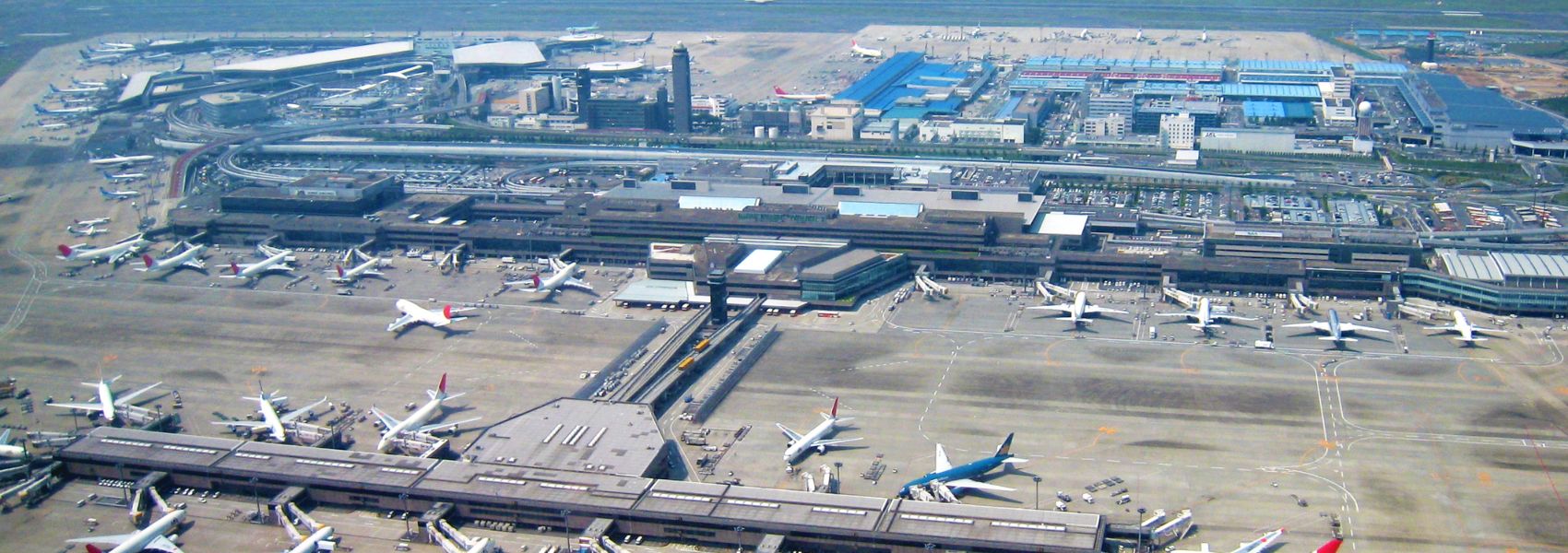
Image: Narita International Airport (Source: Wikipedia)
- Tokyo Airports: Tokyo has two major airports: Narita International Airport (NRT) and Haneda International Airport (HND). While Narita primarily handles international flights, Haneda serves domestic and international routes. Both airports offer regular flights for travelers flying to Hokkaido, although Haneda is typically preferred for domestic travel due to its proximity to central Tokyo.
- Hokkaido Airports: The main airport in Hokkaido is New Chitose Airport (CTS). It is located about 45 kilometers from Sapporo, the island’s capital. While Sapporo Okadama Airport (OKD) is another option, it primarily handles smaller domestic flights and is closer to the city center. Most travelers opt for New Chitose because more flights and better facilities are available.
Airlines Serving the Tokyo-Hokkaido Route
Several airlines operate flights between Tokyo and Hokkaido, providing a range of choices from premium carriers to low-cost airlines.
- Full-Service Airlines
- All Nippon Airways (ANA): ANA offers daily flights from Haneda and Narita to New Chitose. ANA is known for its excellent service, reliability, and extensive domestic network.
- Japan Airlines (JAL): Another major Japanese airline, JAL, offers frequent flights between Tokyo and Hokkaido. Like ANA, JAL provides a high level of service and caters to business and leisure travelers.
- Low-Cost Carriers
- Jetstar Japan: A low-cost airline, Jetstar offers affordable flights from Tokyo to Hokkaido. While prices are typically lower than ANA or JAL’s, travelers should know that Jetstar’s tickets do not include checked baggage or in-flight meals unless purchased separately.
- Peach Aviation: Known for its budget-friendly fares, Peach Aviation is another low-cost carrier offering flights from Tokyo to Hokkaido. Peach is a popular choice for travelers who want to save on airfare and are willing to forgo some of the luxuries offered by full-service airlines.
- Skymark Airlines: This domestic carrier balances full-service and low-cost airlines, providing reasonable prices with slightly more amenities than budget carriers.
- Air Do: A regional airline based in Hokkaido, Air Do focuses on serving the Hokkaido region. It is a popular choice for travelers who want to support a local airline while enjoying competitive fares.
Ticket Prices and Booking Options
Ticket prices for flights from Tokyo to Hokkaido vary depending on the time of booking, the airline, and the time of year. Generally, fares range from around $150 on low-cost carriers to over $300 for full-service airlines.
- Low-Cost Fares
For budget-conscious travelers, airlines like Jetstar and Peach Aviation offer some of the cheapest options. For instance, a one-way flight on Jetstar can start as low as ¥20,000 (around $140), but prices can fluctuate depending on demand and how far in advance the ticket is booked.
It’s important to note that low-cost carriers often charge extra fees for checked baggage, seat selection, and onboard refreshments. Prices can increase during peak travel periods such as Golden Week, Obon, and the New Year holidays, so early booking is recommended.
- Full-Service Fares
Travelers who prefer a more comfortable experience may opt for ANA or JAL, which provide complimentary checked baggage, in-flight meals, and more spacious seating. Flights on these airlines typically start at around ¥25,000 (around $175), but prices can reach up to ¥43,000 (around $300) during peak seasons.
Booking directly through airline websites like ANA or JAL often provides the best rates and allows travelers to take advantage of frequent flyer programs and promotions.
Booking Tips
- Skyscanner and MakeMyTrip are excellent platforms for comparing airline fares and booking options.
- Be mindful of extra fees when booking with low-cost carriers. Many budget airlines charge additional fees for checked baggage, which can significantly reduce the overall cost if not factored in.
- Booking in advance can save money, especially if traveling during Japan’s peak holiday season.
Flight Duration
One of the main advantages of flying from Tokyo to Hokkaido is the short travel time. The average flight duration from Tokyo’s Narita or Haneda airports to New Chitose Airport is about 1 hour and 45 minutes. This makes air travel the fastest option for getting from Tokyo to Hokkaido, especially compared to the Shinkansen or driving, which can take several hours.
Frequency of Flights
Flights between Tokyo and Hokkaido are widespread, with daily departures every 30 minutes on average, especially from Haneda Airport. Airlines like ANA and JAL offer numerous flights daily, ensuring travelers have flexible scheduling options. Low-cost carriers like Jetstar and Peach Aviation also operate multiple flights daily, although their schedules may be slightly less frequent than the major carriers.
Convenience and Accessibility
Narita and Haneda airports are relatively easy to access for travelers flying from Tokyo to Hokkaido. However, Haneda is more convenient for domestic flights due to its proximity to central Tokyo. Haneda is about 15 kilometers from central Tokyo and can be reached by train, bus, or taxi in around 30 minutes to an hour, depending on traffic. Conversely, Narita is located about 60 kilometers from central Tokyo and typically requires a longer transfer time, ranging from 1 to 2 hours by train or bus.
Once in Hokkaido, New Chitose Airport is well-connected to Sapporo and other major destinations. Travelers can reach Sapporo Station from New Chitose in about 40 minutes via the JR Hokkaido Rapid Airport Express, which departs every 15 to 20 minutes. Alternatively, travelers can take a bus or taxi, though the train is often the fastest and most convenient option.
Comparison with Other Modes of Transport
When deciding between flying, taking the Shinkansen, or driving from Tokyo to Hokkaido, air travel is the fastest and most convenient option, especially for those with limited time. The flight takes under two hours, compared to the 4 to 5 hours required to travel by bullet train (Shinkansen) and the 8 to 9 hours it would take by car.
However, travelers should consider factors like ticket prices, travel to and from the airport, and overall comfort. While air travel is fast, the time spent getting to and from the airports can add up, particularly if flying out of Narita. The Shinkansen offers a more scenic and relaxing journey, though it takes longer and may be more expensive during peak seasons.
Practical Tips for Air Travelers
- Arrive Early: For domestic flights, it’s recommended to arrive at the airport at least 1 to 1.5 hours before departure to allow time for check-in, security checks, and boarding.
- Consider Baggage Fees: If traveling on a low-cost carrier like Jetstar or Peach Aviation, check the airline’s baggage policy and consider pre-paying for checked bags to save money.
- Use Public Transport to the Airport: To avoid expensive taxi fares, use the train or bus to reach Narita or Haneda airports. Both airports are well-serviced by public transportation, and the JR lines offer convenient connections to many parts of Tokyo.
- Look for Sales and Promotions: Full-service airlines like ANA and JAL frequently offer sales on domestic flights, so it’s worth checking their websites for special deals and promotions. Some credit cards offer discounts or bonus miles for booking flights, which can help reduce costs.
2. Shinkansen (Bullet Train)
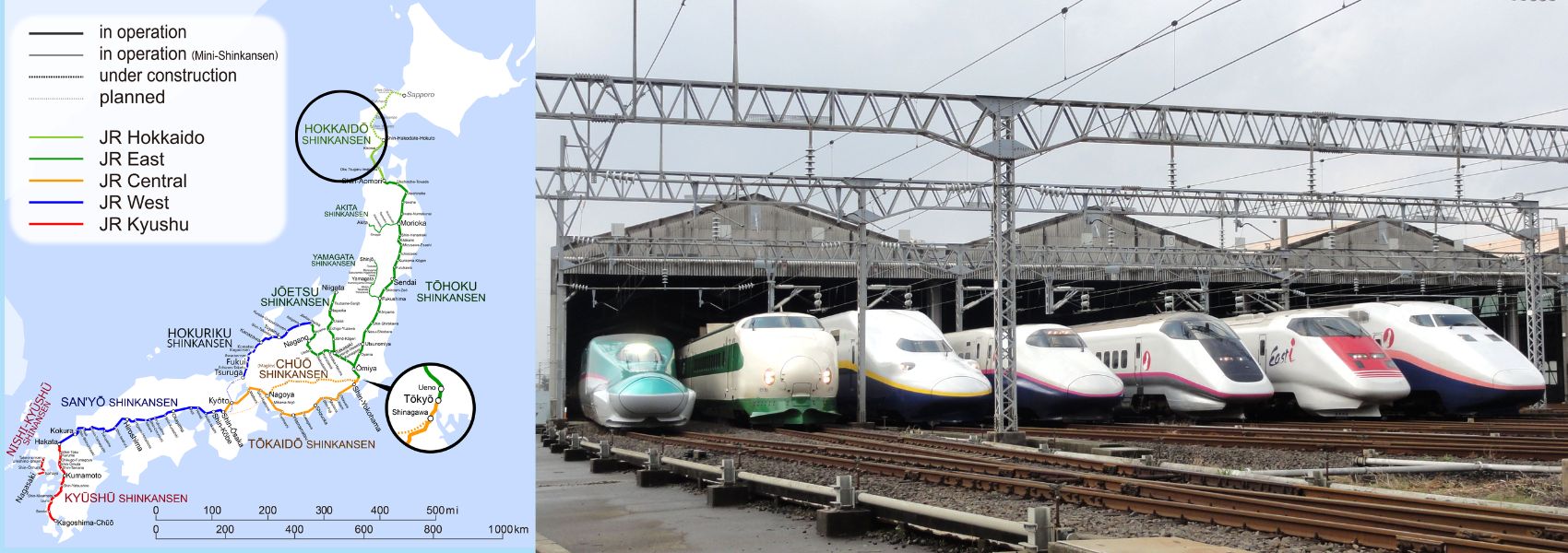
The Shinkansen, Japan’s iconic bullet train, offers one of the most scenic and comfortable ways to travel from Tokyo to Hokkaido. This journey, spanning over 1,000 kilometers, showcases the engineering marvel of Japan’s rail system and takes travelers through some of the country’s most picturesque landscapes. The Hokkaido Shinkansen, launched in 2016, connects Tokyo to Hakodate on the southern tip of Hokkaido, with plans to extend the line to Sapporo by 2030.
Overview of the Hokkaido Shinkansen
The Hokkaido Shinkansen represents the latest addition to Japan’s high-speed rail network. JR Hokkaido operates this line from Shin-Aomori in Honshu to Shin-Hakodate-Hokuto in Hokkaido. For travelers starting in Tokyo, the journey involves boarding the Tohoku Shinkansen to Shin-Aomori, where the Hokkaido Shinkansen continues the trip.
Key Stops and Travel Duration
While the Shinkansen journey from Tokyo to Hokkaido is often regarded as long (around 4-5 hours to Shin-Hakodate-Hokuto), the trip can be broken down into segments:
- Tokyo to Shin-Aomori: This portion, covered by the Tohoku Shinkansen, takes approximately 3 hours.
- Shin-Aomori to Shin-Hakodate-Hokuto: The Hokkaido Shinkansen segment takes another 1.5 to 2 hours and covers about 148 kilometers, including the passage through the Seikan Tunnel, the world’s longest undersea tunnel at 53.85 kilometers.
For the entire journey from Tokyo to Hakodate, travelers should expect around 4 to 5 hours. This is significantly faster than the traditional limited express trains that predated the Shinkansen, which took closer to 8 hours.
Seating Classes and Ticket Prices
The Shinkansen offers three main seating classes, as mentioned below:
- Ordinary Class: The most affordable option offers comfortable, economy-style seating. Seats are spacious compared to many international standards, with ample legroom and reclining features.
- Green Car (First Class): The Green Car is Japan Rail’s equivalent of first class, offering more luxurious, wider seats with additional legroom. Green Car passengers also enjoy perks like quieter cars, hot towel service, and more dedicated attention from attendants.
- Gran Class (Luxury Class): Gran Class is the most premium seating option, providing leather seats that fully recline, an attendant service, complimentary meals, and exclusive amenities such as personal lighting and blankets.
Ticket prices vary depending on the class.
- Ordinary Class: Around ¥23,000-¥27,000 (around $161 to $190), depending on the season.
- Green Car: Around ¥33,000-¥37,000 (around $230 to $260).
- Gran Class: Around ¥43,000-¥47,000 (around $302 to $330).
Scenic Beauty and Comfort
One of the greatest advantages of taking the Shinkansen is the combination of speed with sightseeing. Throughout the journey, passengers are treated to various landscapes, ranging from urban skylines to serene countryside.
As the train moves northward, the scenery transitions from the bustling streets of Tokyo to the snow-capped mountains and lush greenery of northern Honshu before arriving at the natural beauty of Hokkaido.
Key scenic highlights include:
- Mount Fuji: On a clear day, passengers on the left side of the train can glimpse Japan’s iconic mountain shortly after departing from Tokyo.
- Tohoku Region: As the train speeds through Tohoku, the scenery becomes more rural, with traditional rice paddies, small villages, and mountainous landscapes.
- Seikan Tunnel: The transition from Honshu to Hokkaido occurs through the Seikan Tunnel. While passengers won’t see the ocean inside the tunnel, it’s still an engineering marvel worth noting.
Speed and Engineering
The Shinkansen is renowned for its high speed, reaching up to 320 kilometers per hour (199 miles per hour) on the Tohoku segment. However, due to safety regulations and the tunnel crossing, the Hokkaido Shinkansen operates at slightly lower speeds in certain areas.
One of the Shinkansen’s most remarkable features is its stability and comfort, even at high speeds. Thanks to advanced engineering, passengers experience very little noise or vibration, which allows them to relax, work, or enjoy the views in peace. The trains are equipped with air suspension systems to enhance ride smoothness further, and each car is pressurized to prevent ear discomfort while passing through tunnels.
The Seikan Tunnel: A Modern Engineering Wonder
The Seikan Tunnel is a significant part of the journey from Tokyo to Hokkaido, as it connects the two islands. This tunnel, completed in 1988, stretches for 53.85 kilometers (33.46 miles), of which 23.3 kilometers run under the seabed of the Tsugaru Strait. It is the longest and deepest undersea tunnel in the world, making it an essential infrastructure project for connecting Hokkaido to the rest of Japan.
The construction of the Seikan Tunnel was driven by safety concerns after several ferry accidents in the 1950s, including a major disaster in 1954 that killed over 1,000 people. The tunnel was intended to provide a safer alternative to ferries and eventually became the route for the Hokkaido Shinkansen.
While the tunnel is not visible to passengers, it remains a testament to Japan’s commitment to innovative engineering. Crossing the tunnel takes about 30 minutes, and trains pass through it seamlessly without significantly slowing down.
The Benefits of the Shinkansen over Other Modes of Transport
For travelers weighing the pros and cons of the Shinkansen compared to flying or taking a bus, the bullet train offers several distinct advantages:
- Comfort: The Shinkansen is designed with passenger comfort in mind. Even in Ordinary Class, seats are spacious, recline significantly, and offer ample legroom. Passengers can easily move around the train to stretch their legs, visit the onboard restrooms, or buy food from the cart service.
- Convenience: Unlike airports, Shinkansen stations are often located in city centers, allowing passengers to save time on transfers. Boarding is quick and hassle-free, with no security checks or baggage claims, making it ideal for travelers seeking a smooth, efficient journey.
- Punctuality: Japan’s Shinkansen is famous for its punctuality, with average delays measured in seconds rather than minutes. This reliability is especially useful for travelers with tight schedules.
- Environmental considerations: High-speed rail is more environmentally friendly than flying. The Shinkansen operates on electricity, reducing carbon emissions compared to air travel, which relies on jet fuel.
- Scenic experience: While air travel offers quick transit, it lacks the scenic experience of the Shinkansen. For tourists and first-time visitors to Japan, the bullet train offers an opportunity to see more of the country’s diverse landscapes during the trip.
Practical Tips for Travelers
Here are some tips to make your Shinkansen journey from Tokyo to Hokkaido smooth and enjoyable:
- Booking tickets: Tickets for the Shinkansen can be purchased online through the JR East website, at ticket counters in major train stations, or through automated machines. If you plan to travel during busy periods (like Golden Week or New Year’s), booking your tickets in advance is advisable to secure a seat.
- Japan rail pass: If you’re traveling as a tourist, consider purchasing a Japan Rail Pass. This pass offers unlimited travel on JR trains, including the Shinkansen, for a fixed period. It can be a cost-effective option for those planning to travel extensively by train across Japan.
- Food and Drink: While there is food and drink service on board, it’s common for passengers to bring their own bento boxes (Japanese lunch boxes) to enjoy during the journey. These can be purchased at the station or convenience stores before boarding.
3. Ferry Options from Tokyo to Hokkaido
Traveling from Tokyo to Hokkaido by ferry offers a unique and leisurely experience, allowing passengers to enjoy scenic sea views while moving between Japan’s main island of Honshu and the northern island of Hokkaido. This section provides a comprehensive guide to ferry travel from Oarai (near Tokyo) to Tomakomai (Hokkaido), including ferry schedules, ticket prices, cabin options, and important travel information to help you plan your trip.
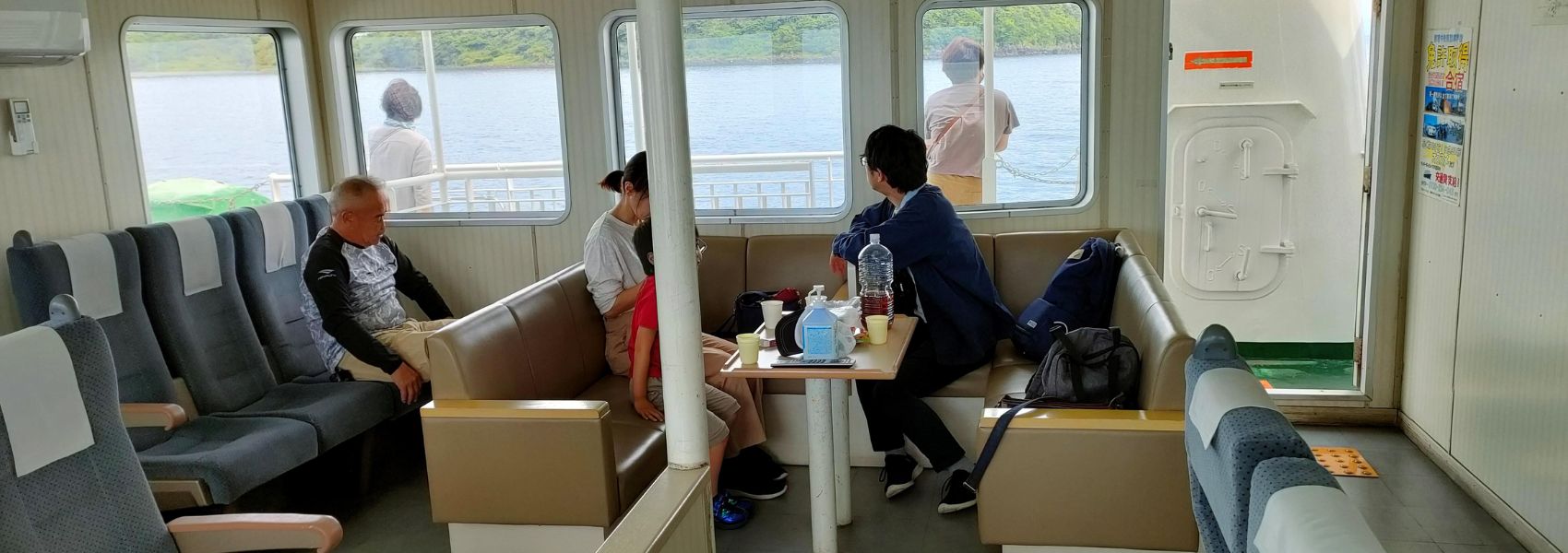
Ferry Operators and Routes
The primary ferry operator for the Tokyo-Hokkaido route is MOL Ferry’s Sunflower Line. This ferry service connects Oarai in Ibaraki Prefecture (about 2 hours from Tokyo) to Tomakomai in Hokkaido. Tomakomai is conveniently located near Sapporo, making it an ideal point of entry into Hokkaido.
- Route: Oarai (Ibaraki) to Tomakomai (Hokkaido)
- Ferry Operator: MOL Ferry (Sunflower Line)
- Duration: 17 to 19 hours, depending on the time of day and type of ferry service
Ferry Schedule and Timings
The Oarai-Tomakomai ferry service operates two sailings daily: an evening ferry and a night ferry.
- Evening Ferry
- Departure: 19:45 (7:45 PM) from Oarai
- Arrival: 13:30 (1:30 PM) the next day in Tomakomai
- Duration: Approximately 17 hours and 45 minutes
- Night Ferry
- Departure: 01:45 (1:45 AM) from Oarai
- Arrival: 19:45 (7:45 PM) the same day in Tomakomai
- Duration: Approximately 18 hours
These schedules are subject to seasonal adjustments and weather conditions, so it is recommended that you check for up-to-date timings directly from the ferry operator or booking websites.
Cabin Options and Ticket Prices
The MOL Sunflower Ferry offers various cabin options to cater to different preferences and budgets, ranging from basic tourist-class seating to luxurious suites. Below is a breakdown of cabin options and their approximate prices. Please note that prices fluctuate based on travel dates, availability, and the season.
- Tourist Class (Standard)
- Price: ¥9,500 – ¥21,000 per adult ($66 to around $145)
- Facilities: Basic shared space with reclining seats, no private rooms. Ideal for budget-conscious travelers.
- Comfort Class
- Price: ¥3,000 – ¥25,000 per adult ($20 to around $175)
- Facilities: More spacious seating area, offering greater comfort than the tourist class but still in a shared space.
- Superior Inside (Private Cabin)
- Price: ¥9,500 – ¥34,000 per adult ($66 to around $240)
- Facilities: Private cabin without windows. Offers more privacy and comfort, suitable for families or small groups.
- Superior Ocean View
- Price: ¥11,500 – ¥37,000 per adult ($80 to around $260)
- Facilities: Private cabins with an ocean view, offering a more luxurious experience with a comfortable bed and private bathroom.
- Premium Class
- Price: ¥18,500 – ¥49,500 per adult ($130 to around $350)
- Facilities: High-end cabins with additional amenities such as larger beds, en-suite bathrooms, and extra space for comfort.
- Suite Class
- Price: ¥44,500 – ¥77,000 per adult ($312 to around $531)
- Facilities: Luxurious suites with ample space, including a private living area, bedroom, and premium amenities. Meals are typically included in the fare.
- With Pet Room Options
- Price: Starts at ¥11,500 for a shared pet-friendly room (around $80)
- Facilities: These cabins are designed to accommodate pets, ensuring passengers can travel comfortably with their dogs or cats.
Vehicle Transportation Options
If you’re planning to bring your vehicle with you on the ferry, there are options available for cars, motorcycles, and bicycles. Here’s a summary of vehicle fares:
- Cars (less than 5 meters in length) Price: ¥34,000 – ¥49,000 depending on the season ($240 to around $345)
- Motorcycles Price: Starts at ¥8,500 (around $60)
- Bicycles Price: ¥2,200 (around $15)
Bringing your vehicle allows for greater flexibility when exploring Hokkaido, particularly for accessing remote areas not well-served by public transportation.
Dining and Entertainment Onboard
The Sunflower ferries are well-equipped with dining options and entertainment facilities, making the long journey both comfortable and enjoyable.
- Dining
- Cafeteria-Style Meals: Ferries have cafeterias offering a variety of Japanese and Western dishes. Prices are affordable, with meal sets typically ranging from ¥500 to ¥1,500 ($3 to around $11).
- Vending Machines: Vending machines are available on board for light snacks, beverages, and instant noodles.
- Public Spaces and Amenities
- Public Baths: Enjoy a relaxing bath with a view of the sea. Public baths are a unique feature of Japanese ferries.
- Lounges: Comfortable seating areas where you can relax, read, or enjoy the view.
- Karaoke Rooms: Available for private booking, a fun option for groups and families.
- Arcade Games: There are a few arcade game machines available for entertainment.
Booking Your Ferry Tickets
Tickets for the Oarai-Tomakomai ferry can be booked directly through the MOL Ferry (Sunflower Line) website or third-party booking platforms like Direct Ferries. Prices may vary depending on the booking platform, and additional fees may apply for online reservations.
MOL Sunflower Website: [MOL Ferry Sunflower] (https://www.sunflower.co.jp/en/)
Direct Ferries: [Oarai-Tomakomai Ferry] (https://www.directferries.com/oarai_tomakomai_ferry.htm)
It’s advisable to book your tickets well in advance, especially during peak travel seasons such as Golden Week (April–May) and summer vacation (July–August), as ferries tend to fill up quickly.
Important Travel Tips
- Arrive Early: Passengers are generally required to arrive at the ferry terminal 1–2 hours before the scheduled departure. This allows ample time for check-in and boarding.
- Prepare for the Long Journey: While the ferry is comfortable, the journey takes approximately 17–19 hours. Pack snacks, entertainment (books, games, etc.), and any essential items to make your trip more enjoyable.
- Travel with Pets: If you’re traveling with pets, ensure to book a pet-friendly cabin in advance as availability is limited.
- Vehicle Transportation: If you’re traveling with a car, motorcycle, or bicycle, ensure that you reserve a spot for your vehicle at the time of booking, as space can be limited.
- Seasonal Pricing: Ticket prices fluctuate based on the season. Traveling during off-peak times can save you a significant amount of money.
Advantages of Ferry Travel from Tokyo to Hokkaido
- Scenic Views: The ferry offers beautiful sea views, particularly at sunrise and sunset. It’s an opportunity to relax and enjoy the ocean while traveling to Hokkaido.
- Cost-Effective for Groups: For families or groups traveling together, the cost per person can be more economical compared to flying, especially when considering the cost of transportation to/from airports.
- Vehicle-Friendly: Bringing a vehicle allows for easy exploration of Hokkaido, known for its rural charm and scenic drives.
- Leisurely Travel: For those who enjoy a slower, more relaxed pace, ferry travel offers a welcome break from the hustle and bustle of city life.
Disadvantages of Ferry Travel
- Time-Consuming: The ferry journey takes significantly longer than air travel, making it less suitable for travelers on a tight schedule.
- Weather-Dependent: Ferry schedules and travel times can be affected by weather conditions, particularly during the winter months when Hokkaido experiences heavy snowfalls.
By considering all the options, from cabin classes to travel times, ferry travel from Tokyo to Hokkaido can be a unique and enjoyable experience, especially for those who appreciate the journey as much as the destination.
4. Driving to Hokkaido: Tokyo Rental Car Options
If you’re considering driving from Tokyo to Hokkaido, renting a car can offer flexibility and the chance to experience Japan’s scenic roads. Although public transportation in Japan is world-class, there are areas, particularly in rural Hokkaido, where renting a car makes sense, especially if you’re traveling with luggage or in a group.
Below are comprehensive details about renting a car in Tokyo, the requirements, rental costs, GPS navigation options, and tips for long-distance drives to Hokkaido.
Car Rental Companies in Tokyo
Several reputable car rental companies operate throughout Japan, including:
- Toyota Rentacar
- Nippon Rentacar
- Orix Rentacar
- Times Car Rental
- Nissan Rentacar
- Ekiren
You can easily reserve cars through their websites, which mostly offer English options for foreign tourists. Some platforms like [ToCoo! Travel] (https://www2.tocoo.jp/en) and [Rentalcars.com] (https://www.rentalcars.com) provide comparisons across multiple rental services, enabling you to find the best deal.
For those traveling with international rental companies, Avis, Budget, and Hertz also operate in Japan, usually in collaboration with local rental agencies. However, their rates tend to be higher than Japanese providers.
Licensing and Requirements for Foreign Drivers
Foreign tourists must have a Japanese driver’s license or an International Driving Permit (IDP) based on the 1949 Geneva Convention to rent and drive a car in Japan. Suppose you’re from Belgium, France, Germany, Monaco, Switzerland, or Taiwan. In that case, you can drive in Japan with a valid license from your home country and an official Japanese translation, which can be obtained through the Japan Automobile Federation (JAF).
Ensure to acquire these documents before arriving in Japan, as the process cannot be completed locally.
Additionally, you must be at least 18 years old to drive, and most rental companies require a valid credit card for payment. Some companies may offer cash payment options, but this is less common.
Rental Costs and Vehicle Types
Rental fees vary depending on the size and type of car:
- Sub-compact cars: ¥5,000 (around $35) per 24 hours.
- Compact cars: ¥7,500 (around $53) per 24 hours.
- Mid-sized cars: ¥10,000 (around $70) per 24 hours.
- Full-sized cars: ¥15,000 (around $105) per 24 hours.
- Vans: ¥20,000 (around $140) per 24 hours.
Many companies offer short-term rentals for periods as short as 6 or 12 hours. Rates tend to rise during peak seasons, particularly in Hokkaido, when tourism spikes due to summer festivals or winter skiing.
The above rates typically include unlimited mileage, taxes, and a mandatory minimum insurance fee of ¥1,000 per day, which covers damage, injury, and liability. However, if you damage the vehicle, non-operation fees may be charged, and these are not covered by basic insurance.
Driving from Tokyo to Hokkaido: Route and Car Ferry Information
Driving from Tokyo to Hokkaido typically involves crossing the Tsugaru Strait via ferry or the Seikan Tunnel (for train connections). Renting a car for this journey is ideal for travelers exploring remote parts of Japan.
Ferry Options
Several ferry services operate between Honshu and Hokkaido, allowing drivers to take their cars across. The most popular routes include the Oarai to Tomakomai (by Sunflower Ferry): This 18-hour ferry crossing is among the more comfortable options, with fares starting from ¥11,500 (~$78 USD) for a standard cabin. The ferry departs from Oarai port, 130 kilometers northeast of Tokyo, and arrives at Tomakomai in southern Hokkaido. The journey offers amenities like dining options and private rooms, making it an enjoyable cruise across the Pacific.
For ferry bookings, visit the [Sunflower Ferry official website] (https://www.sunflower.co.jp/en/).
A budget-conscious traveler, renting a car in Hokkaido is often cheaper after arriving by ferry or plane, as car ferry fees can be prohibitively expensive for long distances. For example, crossing the Tsugaru Strait with a rental vehicle can cost several tens of thousands of yen.
Gas Prices and Refuelling
Japan’s gas stations offer both full-service and self-service options. As of March 2024, the average price of regular gasoline is around ¥170 per litter (~ USD 1.16). Most rental agreements require cars to be returned with a full tank, although some outlets offer refuelling at competitive rates when returning the vehicle.
Full-service stations are more common in urban centers, but self-service stations have proliferated across the country. At full-service stations, attendants handle refuelling, and it helps to know simple Japanese phrases like “mantan” (fill it up) and whether you want to pay by “cash” or “credit card.”
Navigation: Using GPS Systems in Rental Cars
Most rental vehicles in Japan come equipped with GPS navigation systems. Some models offer English-language options, but it’s always best to confirm this during booking. Entering destinations is usually done by inputting phone numbers rather than addresses, which is more convenient for most users. This feature is especially helpful in rural areas where addresses can be confusing or missing.
If the vehicle’s GPS is only in Japanese, consider using Google Maps or another navigation app as a backup.
Winter Driving in Hokkaido
If you plan to visit Hokkaido in winter, be aware of the challenges posed by snow and ice. Hokkaido is famous for its heavy snowfall, and winter tires (often referred to as snow tires) are mandatory for rental cars during the cold season. Most rental companies generally provide these at no extra cost.
For tourists unfamiliar with winter driving conditions, especially on narrow or icy roads, it’s advisable to stick to public transportation or limit driving to well-maintained highways.
Parking and Drop-off Fees
Parking in urban areas can be quite expensive, especially in large cities like Tokyo and Sapporo. Expect to pay ¥300-600 per hour (around $2 to $4) in city centers, though costs decrease in rural areas. Many tourist spots offer flat rates for parking, ranging from ¥200-500 (around $1.5 to $3.5) per day, while hotels in large cities typically charge around ¥1,000 ($7) per night for parking.
For convenience, most rental companies allow one-way rentals, letting you drop off your car at a different location than where you picked it up. However, fees for this service can be steep, especially over long distances. For example, dropping off a car in Hokkaido that you rented in Tokyo may incur fees of ¥20,000 – ¥50,000 (around $140 to $351).
Note: Renting a car in Honshu (Japan’s main island) is not usually possible and dropping it off in Hokkaido, or vice versa.
Renting a Car on a Budget
For budget-conscious travelers, several strategies can help reduce costs:
- Off-peak travel: Car rental rates increase during peak seasons like Golden Week, and Traveling during off-peak times can help secure cheaper rates.
- Short-term rentals: If you’re only planning a day trip, most companies offer cheaper rentals for 6-12 hours.
- Separate rentals: Instead of driving from Tokyo to Hokkaido, consider renting a car after arriving in This can save on ferry fees and the additional drop-off charges incurred with long-distance rentals.
- Booking in advance: Many rental agencies offer discounts for early online bookings.
Where to Stay in Hokkaido: A Comprehensive Guide
Hokkaido offers a variety of accommodation options to suit different budgets, travel styles, and needs. Whether you’re looking for luxury resorts, traditional ryokan, budget hotels, or cozy guesthouses, Hokkaido has it all. Here’s a detailed guide covering the types of accommodations, facilities, rates, and essential information like check-in/check-out times.
Types of Accommodation in Hokkaido
- Luxury Resorts and Hotels
- Niseko Resorts: Niseko is renowned for its world-class skiing and upscale resorts. Luxury stays like The Green Leaf Niseko Village offer beautifully appointed rooms, hot springs (onsen), and ski-in/ski-out facilities. The average rate is around ¥40,000 – ¥70,000 per night (around $280 to $490), depending on the season. Check-in is typically around 3:00 PM, and check-out is by 11:00 AM.
- Jozankei Onsen Resorts: For a luxurious hot spring experience, Jozankei, located near Sapporo, features resorts like Jozankei Tsuruga Resort Spa Mori no Uta. With private onsen, gourmet dining, and scenic views, this is ideal for those seeking relaxation. Rates start from around ¥30,000 (around $210) per night.
- Ryokan (Traditional Japanese Inns)
- Asahidake Onsen Yukomanso: Located in the picturesque Asahidake area, this ryokan combines traditional Japanese aesthetics with natural hot springs. Rooms come with tatami mats, futons, and yukata robes. Prices start from ¥ $20,000 per night (around $140), with dinner and breakfast included. Check-in is at 3:00 PM, and check-out is at 10:00 AM.
- Hanamomiji Ryokan: Nestled in the Jozankei hot spring area, this ryokan provides an authentic experience with traditional kaiseki meals and open-air baths. Rooms start from ¥25,000 per night (around $175).
- Budget Hotels and Hostels
- Sapporo Capsule Hotel: Capsule hotels are a budget-friendly option, offering a compact sleeping pod, shared bathrooms, and communal spaces. Rates at Capsule Inn Sapporo start at ¥3,500 per night (around $24), making it ideal for solo travelers.
- The Stay Sapporo: This affordable guesthouse offers dormitory-style and private rooms. Dormitory beds start from ¥ $2,500 per night (around $17), while private rooms can cost up to ¥ $10,000 (around $70). Check-in is at 3:00 PM, and check-out is at 10:00 AM.
- Business Hotels
- Daiwa Roynet Hotel Sapporo-Susukino: Popular among business travelers, this hotel offers modern amenities, free Wi-Fi, and easy access to central Sapporo. Rates start at around ¥8,000 per night (around $56). These hotels are known for their convenience and efficiency, making them perfect for both business and leisure travelers.
- Hotel Mystays Premier Sapporo Park: This chain hotel is part of a national brand offering comfortable and affordable stays. Rates range from ¥ $6,000 to ¥ $12,000 per night (around $42 to $84), depending on room type and season.
- Minshuku (Family-Run Inns)
- Minshuku Miharashi: Located in the rural areas of Hokkaido, Minshuku Miharashi offers a more personal experience with cozy accommodations and home-cooked meals. Rates are typically ¥5,000 to ¥7,000 per night (around $35 to USD 50). Minshuku is perfect for travelers seeking a more intimate and local experience.
Facilities
Hokkaido accommodations cater to various preferences, with facilities ranging from the basic to the luxurious:
- Onsen (Hot Springs)
Many hotels and ryokan in Hokkaido feature onsen facilities. Popular destinations like Noboribetsu, Jozankei, and Sounkyo offer both public and private baths, with outdoor options that allow you to soak while enjoying nature’s beauty.
- Dining Options
Ryokan often serve multi-course traditional meals (kaiseki), which highlight local ingredients and seasonal Flavors. Some hotels also offer both Western and Japanese buffets.
For international visitors, many luxury hotels and business accommodations provide Western dining options, room service, and international cuisine.
- Wi-Fi and Internet
Most accommodations, from budget hostels to luxury resorts, offer free Wi-Fi, although the speed and reliability may vary in rural areas.
- Parking
Free parking is common in more rural or suburban areas, while city hotels may charge ¥ $1,000 to ¥ $2,000 per night (around $7 to $14) for parking.
Rates and Booking
Rates fluctuate depending on the season, with peak times during winter (for skiing) and summer (for festivals and sightseeing). Booking.com and TripAdvisor offer competitive rates and reviews, making them excellent platforms for booking accommodations in Hokkaido.
Rate Ranges
- Luxury Hotels: ¥40,000 to ¥70,000 per night (around $281 to $491).
- Mid-range Ryokan: ¥20,000 to ¥30,000 per night (around $140 to $210).
- Budget Hotels: ¥3,500 to ¥8,000 per night (around $24 to $56).
- Capsule Hotels: ¥2,500 to ¥4,500 per night (around $17 to $31).
Check-In and Check-Out Times
The general check-in time in Hokkaido hotels and inns is between 3:00 PM and 4:00 PM, while check-out is typically between 10:00 AM and 11:00 AM. Some hotels may offer late check-out or early check-in options for an additional fee.
Conclusion
Driving from Tokyo to Hokkaido is an adventure that offers more flexibility and a chance to explore off-the-beaten-path destinations compared to traditional public transport. Whether you’re traversing scenic highways, enjoying the convenience of car ferries, or navigating Hokkaido’s rural roads, this trip deepens into Japan’s natural beauty and regional diversity.
When planning your drive, consider the options for renting a car in Tokyo and be sure to meet the requirements, such as an International Driving Permit (IDP) or a translated local license. Also, remember that rental costs and vehicle availability vary, so early booking is key, particularly during peak seasons.
Preparing for long drives and the different conditions you may encounter, especially in Hokkaido’s winter months, is crucial for those embarking on this road trip. While renting a car locally in Hokkaido may be more economical to avoid high ferry costs, driving the entire distance gives you a rare perspective of Japan’s diverse landscapes.
With proper preparation, this road trip from Tokyo to Hokkaido can be an unforgettable experience. It combines the excitement of travel with the serenity of Japan’s stunning natural landscapes.
Frequently Asked Questions
What is the most convenient mode of transportation between Tokyo and Hokkaido?
The fastest option is flying from Tokyo to Sapporo, which takes about 1.5 hours. For a more scenic route, the ferry from Oarai to Tomakomai is enjoyable but takes 17-19 hours. Choose based on your preference for speed or experience.
Can I bring my pet on the ferry from Tokyo to Hokkaido?
Yes, many ferries, like those operated by MOL Sunflower Line, are pet-friendly. Book pet-friendly cabins in advance and ensure you follow all pet travel regulations, including having a proper carrier.
How can I find the best accommodation options in Hokkaido?
Use booking platforms like Booking.com and TripAdvisor to compare options and read reviews. Consider your budget, desired amenities, and location. Book early, especially during peak travel times, to secure the best rates and availability.



